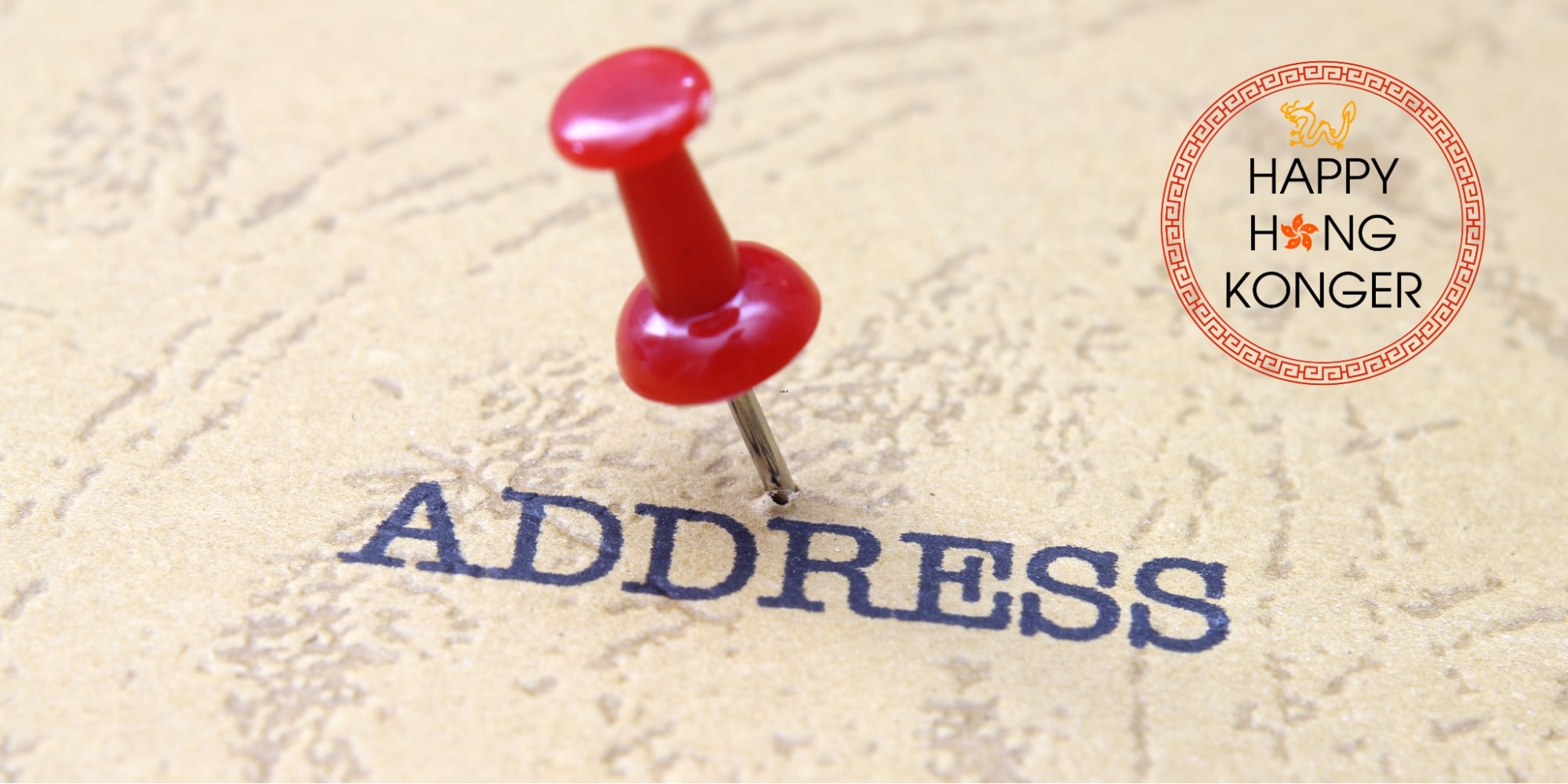Categories > Guides and Tips

How do Hong Kong addresses work?
So, quick confession: I never had to send a letter on my own until I was eighteen. Imagine my surprise when I found out I still needed a parent to help with that (don’t worry, I’m independent now!).
What made it necessary for me to ask for my mom’s help? Believe it or not: writing the address correctly!
HK addresses don’t really work like in most other countries, which I’ll show you today. At the very least, what I’ve learned should help you avoid the embarrassment I had to go through when I asked my mom to help me address an envelope!
How do Hong Kong addresses work?
Hong Kong addresses have no standard address format. This is because Hong Kong’s postal system is very hand-intensive, and postmen are trained to recognize addresses based on the district, street name, building name, and unit number.
However, there are some general guidelines that you can follow when writing a Hong Kong address, and knowing the elements of a Hong Kong address is a crucial first step.
Elements of a Hong Kong Address
Hong Kong addresses have several key elements that play a crucial role in ensuring accurate mail delivery. Here’s a breakdown of these general components:
- Unit Number, Floor, and Building Name and Number: The unit number denotes the specific apartment or office, providing a unique identifier for the recipient’s location.
- Street Name: The street name constitutes the fundamental address information. This combination directs postmen to the correct building on the specified street.
- Name of Village, Town, or District: Including the name of the village, town, or district further refines the address, ensuring accurate delivery, especially in areas with similar street names.
- HONG KONG, KOWLOON, or NEW TERRITORIES: The regional identifier, whether it’s HONG KONG, KOWLOON, or NEW TERRITORIES, is a crucial component. It directs the mail to a specific region for further sorting and distribution.
Guidelines for Writing a Hong Kong Address
Sending mail within Hong Kong or internationally involves understanding the nuances of the local addressing system.
For Hong Kong, the address should always include:
- Name of addressee
- Flat and Floor numbers
- Name of building
- Number of building and name of street
- Name of village, town or district (in CAPITAL LETTERS)
- (Optional depending on destination) HONG KONG, KOWLOON, or NEW TERRITORIES as appropriate (in CAPITAL LETTERS)
- (At least if previous line was not HONG KONG) HONG KONG (in CAPITAL LETTERS to show the ‘destination country’)
Order-wise, one crucial aspect to grasp is that the structure of a Hong Kong address depends on whether it is written in the native script (Chinese characters) or the Latin script (Roman letters).
When composing a Hong Kong address in the Latin script, the order of elements begins with the recipient’s or contact person’s name, followed by any sub-building and building information, house number, street name, city, province, and country listed on the last line.
Latin Script Example:
Line 1: John Smith
Line 2: Apartment 3B
Line 3: Tower 7
Line 4: 42 Elm Street
Line 5: Tsim Sha Tsui
Line 6: Kowloon
Line 7: HONG KONG
Conversely, if the address is written in the native script, the order is reversed.
The recipient’s or contact person’s name starts with the address on the last line, followed by any sub-building and building information, house number, street name, city, province, and country stated at the beginning.
Native Script Example:
Line 1: 香港 (Country)
Line 2: 九龍 (Province)
Line 3: 旺角 (City)
Line 4: 彌敦道 123號 (Street Name House Number)
Line 5: 金融中心大廈 (Building Information)
Line 6: 高層 28樓 (Sub-Building Information)
Line 7: 張小姐 (Recipient or Contact Name)
Regardless of the chosen script, addresses can be written in either Chinese characters or Roman letters.
However, using the native script is recommended by the postal service due to its efficiency in mail delivery. Nevertheless, addresses written in the Latin script are also accepted.
Tips for Sending Mail in Hong Kong
To ensure your mail navigates the city’s unique addressing system effectively, consider these practical tips:
- Sender’s Address: Put your name and address in the top left corner of the envelope. This helps in case the mail can’t be delivered and needs to be sent back to you. You can write it on the front or back of the envelope.
- Mailing Address: Clear writing is key! Postmen use the address on the mail to deliver it, so make sure it’s easy to read. Print or write the address neatly and accurately.
- Address Zone: Keep the address within the address zone. It helps our sorting machines work faster and deliver your mail more efficiently.
- Use of Language: Write the address in a language that everyone can understand. Use Roman letters and Arabic numerals for clarity.
If you’re sending mail overseas, write the city and country names in English. Don’t forget the postal code, if there is one! For local mail or mail to Mainland China, Macao, or Taiwan, you can use Chinese characters too.
- Use the “Mailing Address Format Finder”: The Mailing Address Format Finder is a useful tool that helps you get the address format right. Here’s how you can use it:
Steps on How to Use Mailing Address Format Finder
Using the Mobile App:
- Download the Hong Kong Post Mobile App: First, download the official Hong Kong Post Mobile App to your smartphone.
- Select “Mailing Address Format Finder”: Inside the app, find and select the “Mailing Address Format Finder” option.
- Enter the Address: Type in the address you want to send mail to. The tool will help you find the correct mailing address format.
- Save or Print: Once you’ve found the right format, you can save the address for future use or directly print it on labels or an envelope.
Using the Website:
- Go to the Hong Kong Post Website: Visit the official Hong Kong Post website at www.hongkongpost.hk.
- Access the Format Finder: Click on “Other Tools” and then select “Mailing Address Format Finder.”
- Enter Address Details: Fill in the address details step by step. You can enter information like street names, building names, and city.
- Preview and Print: Preview the correct mailing address format. Once confirmed, you can choose to print the address directly on an envelope or on labels for your mail.





